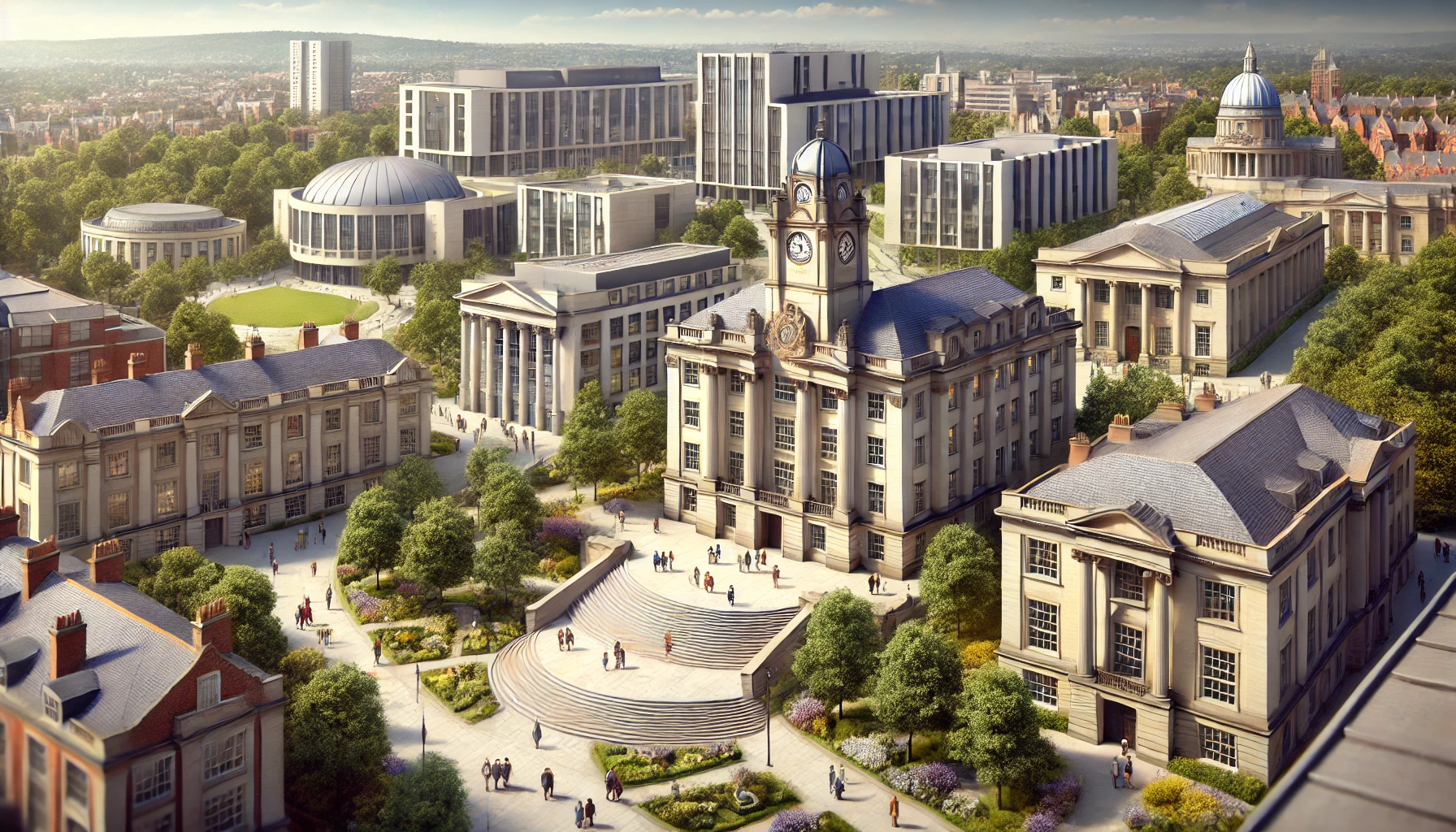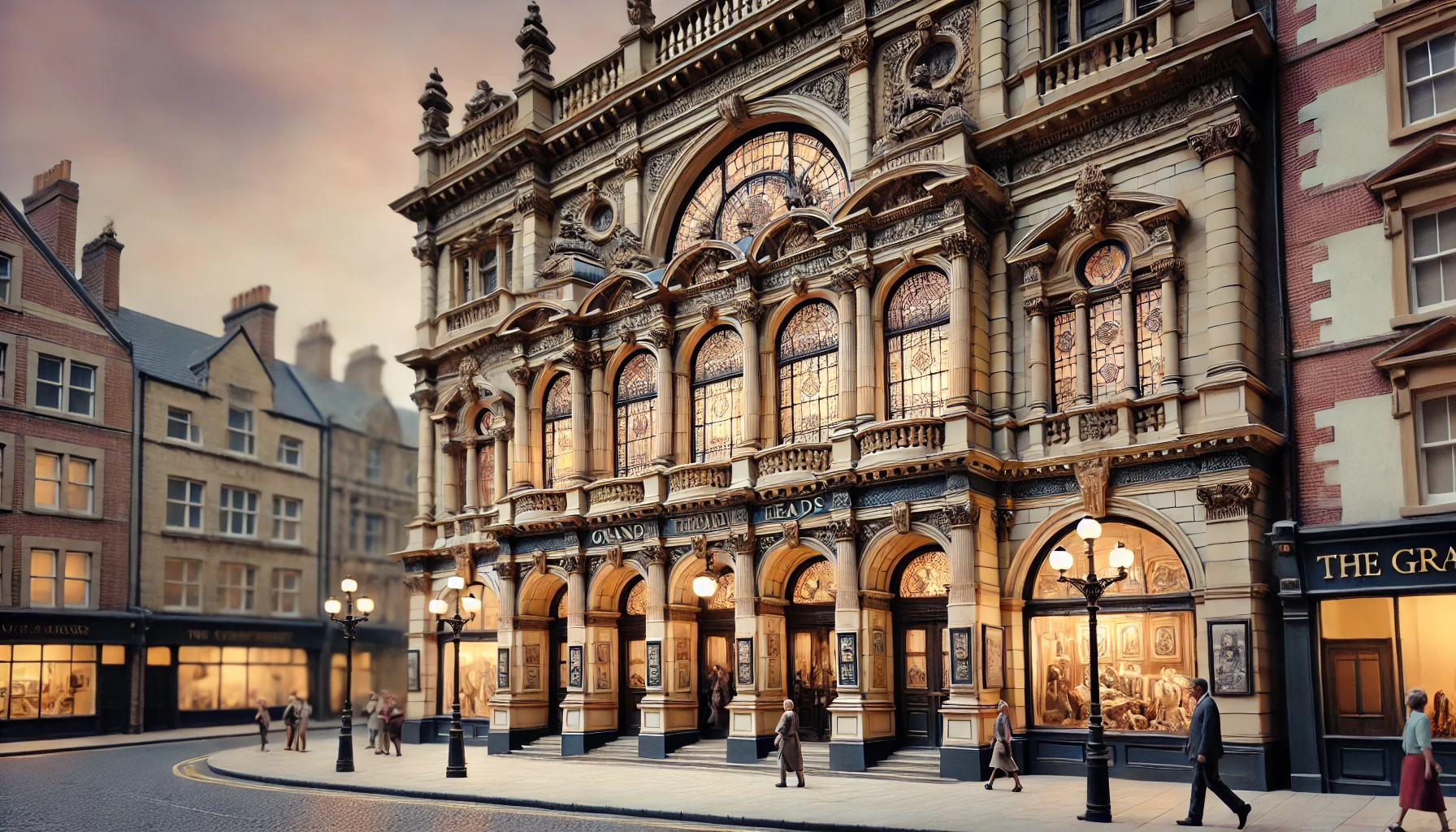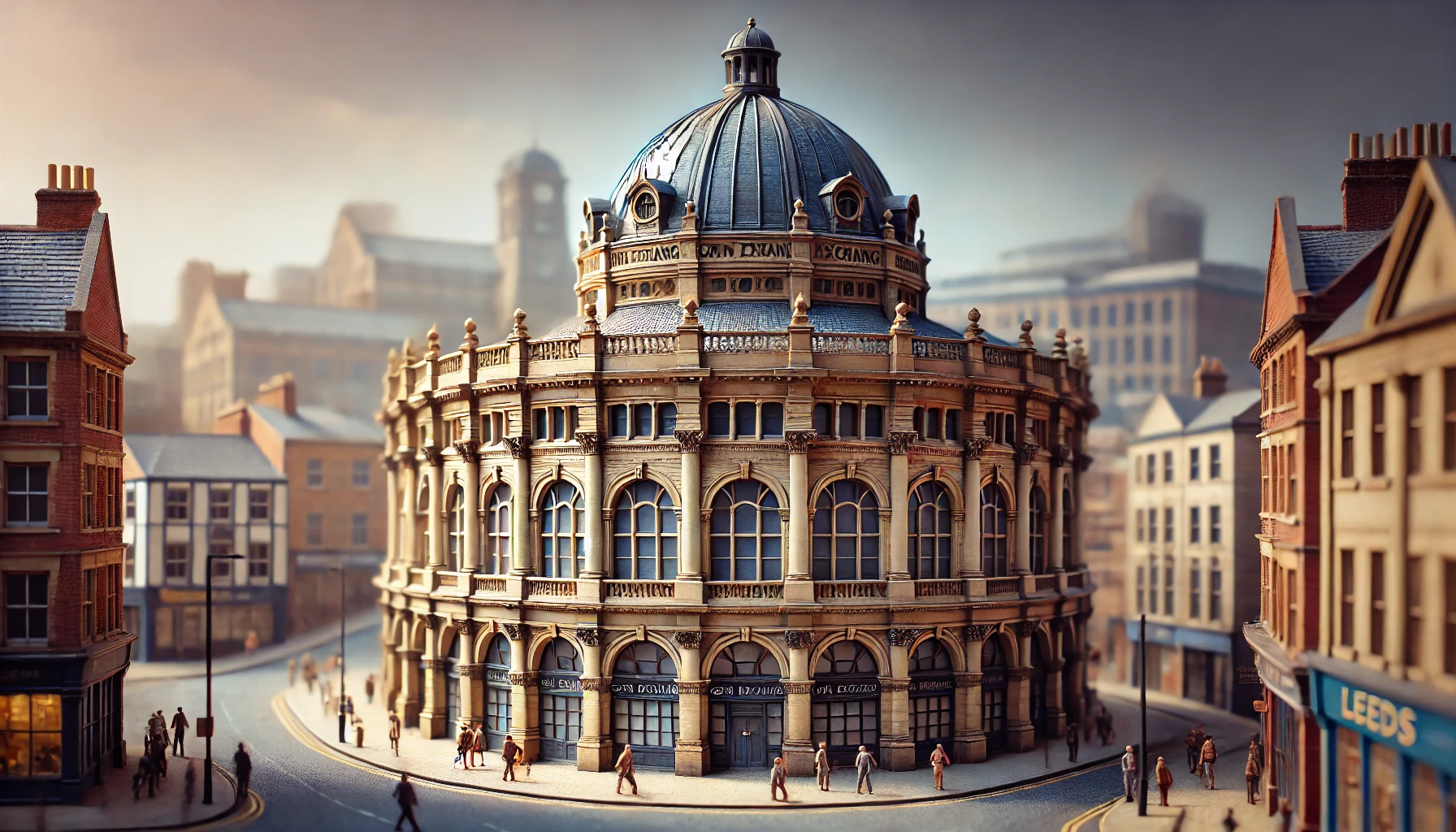
The Best Leeds Attractions for Architecture Lovers
Leeds is a city that offers a fascinating blend of old and new, making it a haven for architecture lovers. Whether you’re drawn to the grandeur of Victorian structures or the sleek lines of contemporary designs, the city has something to captivate your interest. Exploring the Leeds attractions for architecture lovers is like taking a journey through time, where each building tells its own unique story, reflecting the rich history and dynamic growth of this vibrant city.
Leeds’ architectural landscape is a testament to its industrial past, as well as its modern ambitions. From historic landmarks that have stood the test of time to innovative new constructions that push the boundaries of design, the city’s buildings are as diverse as they are impressive. As you explore Leeds, you’ll discover how its architecture serves as a visual narrative of its evolution, showcasing the city’s ability to blend tradition with innovation.
For those planning a visit to Leeds, there’s no shortage of activities to complement your architectural tour. Whether you’re spending the day with friends or looking for things to do on your birthday, the city offers plenty of options. For instance, after a morning of architectural exploration, you might want to dive into some of the things to do in Leeds this weekend. These activities provide a perfect way to unwind and experience the city from different angles, whether through cultural events, shopping, or simply enjoying the local vibe.
Leeds is not just about its buildings; it’s also a city that knows how to celebrate. If you’re in town for a special occasion, there are plenty of things to do on your birthday in Leeds that can be combined with your architectural explorations. Imagine starting your day admiring the city’s stunning architecture and ending it with a celebratory dinner at one of Leeds’ top restaurants.
For those who enjoy combining their love of architecture with culinary delights, Leeds offers a range of dining experiences that can easily be woven into your day. After exploring the city’s architectural gems, why not treat yourself to some of the best food the city has to offer? A foodie’s guide to Leeds will lead you to the best spots where you can enjoy a meal in settings that are as aesthetically pleasing as they are delicious.
We’ll guide you through the must-see architectural attractions in Leeds, providing insights into their historical significance and architectural features. Whether you’re a first-time visitor or a long-time resident, these attractions will give you a deeper appreciation for the city’s architectural heritage. Get ready to explore the structures that make Leeds a top destination for architecture lovers.
Marvel at the Neo-Gothic Splendor of Leeds Town Hall

For architecture enthusiasts, Leeds Town Hall is an absolute must-see. This magnificent building, completed in 1858, is a prime example of Victorian neo-Gothic architecture and stands as one of Leeds’ most iconic landmarks. Designed by architect Cuthbert Brodrick, Leeds Town Hall is celebrated for its grand scale and intricate detailing, making it a highlight for anyone interested in historic architecture.
The exterior of Leeds Town Hall is particularly impressive, with its towering clock tower, ornate Corinthian columns, and intricate carvings that reflect the grandeur of the Victorian era. The building’s design was intended to symbolize the prosperity and civic pride of Leeds during the Industrial Revolution, and it continues to be a source of pride for the city today. The clock tower, which rises 225 feet above the ground, is a dominant feature of the Leeds skyline and can be seen from various points around the city.
Inside, Leeds Town Hall is just as remarkable, with its opulent interiors that include marble staircases, grand halls, and detailed woodwork. The Victoria Hall, the building’s main concert space, is a stunning example of Victorian design, featuring an ornate ceiling, chandeliers, and one of the largest organs in Europe. The town hall regularly hosts concerts, events, and exhibitions, allowing visitors to experience its architectural beauty while enjoying cultural activities.
Guided tours of Leeds Town Hall are available, offering insights into its history, architecture, and the role it has played in the city’s development. These tours provide a deeper appreciation of the building’s design and its significance as a symbol of Leeds’ civic identity.
Leeds Town Hall is a masterpiece of Victorian architecture that continues to captivate visitors with its grandeur and historical significance. Whether you’re an architecture lover or simply appreciate beautiful buildings, Leeds Town Hall offers a fascinating glimpse into the city’s architectural heritage.
Explore the Gothic Revival Beauty of Leeds Cathedral
Leeds Cathedral, also known as the Cathedral Church of St. Anne, is another architectural gem that should not be missed by those who appreciate stunning design. This Gothic Revival building, completed in 1904, serves as the Roman Catholic cathedral of the Diocese of Leeds and is a prime example of early 20th-century ecclesiastical architecture.
Leeds Cathedral’s design is a harmonious blend of Gothic Revival elements, characterized by its pointed arches, ribbed vaults, and detailed stonework. The exterior of the cathedral is striking, with its elegant façade, tall spire, and intricate carvings that reflect the influence of medieval Gothic architecture. The building’s warm sandstone exterior contrasts beautifully with the surrounding urban landscape, making it a standout feature in the city center.
Inside, Leeds Cathedral is equally impressive, with a serene and contemplative atmosphere that invites visitors to explore its architectural features. The nave is particularly noteworthy, with its soaring arches and stunning stained glass windows that fill the space with colorful light. The cathedral also boasts a richly decorated chancel, featuring intricate carvings, statues, and a beautiful high altar that serves as the focal point of the interior.
Leeds Cathedral is not only a place of worship but also a cultural landmark, hosting concerts, exhibitions, and community events throughout the year. Visitors are welcome to attend services or simply explore the building at their own pace, taking in the architectural details and the sense of history that permeates the space.
Leeds Cathedral is a must-visit destination for architecture lovers, offering a perfect example of Gothic Revival design in an ecclesiastical setting. Its combination of intricate exterior and serene interior makes it one of the most beautiful and architecturally significant buildings in Leeds.
Discover the Modernist Elegance of The University of Leeds Campus

Architecture lovers will find much to admire on the University of Leeds campus, where historic and modernist buildings coexist in a dynamic architectural landscape. The campus is home to several architecturally significant structures that reflect the evolution of design from the early 20th century to the present day, making it an essential destination for those interested in both historic and contemporary architecture.
One of the most notable buildings on the University of Leeds campus is the Parkinson Building, a stunning example of neoclassical design completed in 1951. The Parkinson Building’s grand portico, with its imposing columns and expansive steps, has become an iconic symbol of the university. The building’s clock tower, which rises 187 feet above ground, is visible from many parts of the city and adds a touch of classical grandeur to the campus skyline.
In contrast to the neoclassical elegance of the Parkinson Building, the university campus also features several modernist structures that showcase the architectural trends of the mid-20th century. The Roger Stevens Building, completed in 1970, is a prime example of Brutalist architecture, with its bold concrete forms and geometric design. This building, named after a former university vice-chancellor, is renowned for its distinctive use of concrete and its striking, angular shapes.
The campus is also home to the Michael Sadler Building, another modernist gem known for its innovative use of glass and steel. Designed by the architect Chamberlin, Powell and Bon, this building exemplifies the modernist emphasis on functionality and clean lines, making it a favorite among architecture students and enthusiasts.
The University of Leeds campus offers a fascinating journey through different architectural styles, from the neoclassical grandeur of the Parkinson Building to the modernist innovations of the mid-20th century. For architecture lovers, a visit to the campus provides a unique opportunity to explore the evolution of design and appreciate the diverse architectural heritage of Leeds.
Experience the Victorian Splendor of The Corn Exchange
A visit to the Leeds Corn Exchange is a must for anyone with an interest in Victorian architecture and design. This stunning building, completed in 1863, is one of the finest examples of Victorian commercial architecture in the UK and remains a vibrant hub for shopping, dining, and cultural events in Leeds.
Designed by the renowned architect Cuthbert Brodrick, who also designed Leeds Town Hall, the Corn Exchange is a masterpiece of Victorian engineering and aesthetic. The building’s most striking feature is its impressive domed roof, which spans the entire structure without the need for internal supports. This innovative design allows for a vast, open interior space that is flooded with natural light, creating a dramatic and airy atmosphere.
The exterior of the Leeds Corn Exchange is equally impressive, with its circular shape, elegant arched windows, and detailed stonework. The building’s façade is adorned with decorative elements that reflect the Victorian love of ornamentation, including intricate carvings and cornices. The use of high-quality materials and meticulous craftsmanship is evident in every detail, making the Corn Exchange a true architectural treasure.
Inside, the Corn Exchange has been beautifully restored and repurposed as a shopping and dining destination, while retaining many of its original architectural features. The interior galleries, which once housed market stalls, are now home to a variety of independent shops, cafes, and restaurants. The central space, under the soaring dome, is often used for events, exhibitions, and performances, adding to the building’s vibrant and dynamic atmosphere.
The Leeds Corn Exchange is a must-visit for architecture lovers, offering a stunning example of Victorian design and engineering. Its unique combination of historical significance, architectural beauty, and modern-day vibrancy makes it one of Leeds’ most beloved and iconic landmarks.
Appreciate the Edwardian Grandeur of The Grand Theatre

For those who appreciate the elegance of Edwardian architecture, The Grand Theatre in Leeds is a must-see attraction. Opened in 1878, The Grand Theatre is one of the city’s most important cultural landmarks and a prime example of the opulent architectural style that characterized the late 19th and early 20th centuries. The theatre’s design combines elements of Gothic, Romanesque, and Renaissance architecture, creating a richly textured and visually stunning building that has captivated audiences for over a century.
The exterior of The Grand Theatre is characterized by its ornate stone façade, featuring pointed arches, intricate carvings, and decorative cornices. The building’s façade is a testament to the craftsmanship of the period, with every detail carefully designed to convey a sense of grandeur and elegance. The theatre’s main entrance, with its tall, arched windows and decorative stonework, is particularly impressive and serves as a fitting introduction to the opulence that lies within.
Inside, The Grand Theatre is a feast for the eyes, with its lavishly decorated auditorium, gilded boxes, and sumptuous red velvet seats. The theatre’s interior is designed to create a sense of intimacy and luxury, with every detail contributing to the overall sense of grandeur. The ceiling, adorned with intricate plasterwork and a stunning central chandelier, adds to the sense of opulence, making every visit to The Grand Theatre a truly special experience.
The Grand Theatre is not only an architectural gem but also a vibrant cultural venue, hosting a wide range of performances, including opera, ballet, drama, and musical theatre. A visit to The Grand Theatre offers the perfect opportunity to experience the beauty of Edwardian architecture while enjoying world-class entertainment in a historic setting.
The Grand Theatre is a must-visit destination for architecture lovers and anyone who appreciates the grandeur of Edwardian design. Its combination of architectural beauty, historical significance, and cultural vibrancy makes it one of the most treasured landmarks in Leeds.
Discovering Leeds’ Architectural Treasures: A Journey Through Time and Style

Leeds is a city that boasts a stunning array of architectural wonders, each telling a story of the city’s evolution through time. From the towering neo-Gothic splendor of Leeds Town Hall to the refined elegance of Leeds Cathedral, the city’s skyline is a testament to the creativity and vision of the architects who have shaped it. The University of Leeds’ modernist structures contrast beautifully with the intricate Victorian details of the Corn Exchange, offering a visual journey through the rich tapestry of architectural styles that define Leeds.
Each of these architectural landmarks provides a unique window into the cultural and historical forces that have influenced Leeds over the centuries. The intricate detailing of Victorian buildings reflects the prosperity and ambition of the Industrial Revolution, while the bold forms of modernist structures speak to a city embracing progress and innovation. The opulent Edwardian theatres, with their grandeur and attention to detail, evoke a time of cultural blossoming and artistic expression. Together, these buildings form a rich narrative that showcases the city’s dynamic and diverse architectural heritage.
Exploring Leeds’ architectural treasures offers more than just a visual feast; it provides a deeper understanding of the city’s identity and its place in the broader context of architectural history. Each building, with its distinct style and purpose, contributes to the story of Leeds, revealing the city’s transformation from a bustling industrial hub to a modern, cosmopolitan destination.
Leeds’ architectural treasures are a must-see for anyone interested in design, history, or culture. This guide has highlighted some of the city’s most significant and beautiful buildings, each offering a unique glimpse into the architectural trends that have shaped Leeds. By visiting these sites, you not only appreciate the artistry and craftsmanship of the past but also gain a deeper understanding of the cultural and historical forces that continue to influence this vibrant city. Leeds is truly a destination where architecture lovers can explore a diverse and fascinating array of styles, making it a unique and enriching place to visit.





